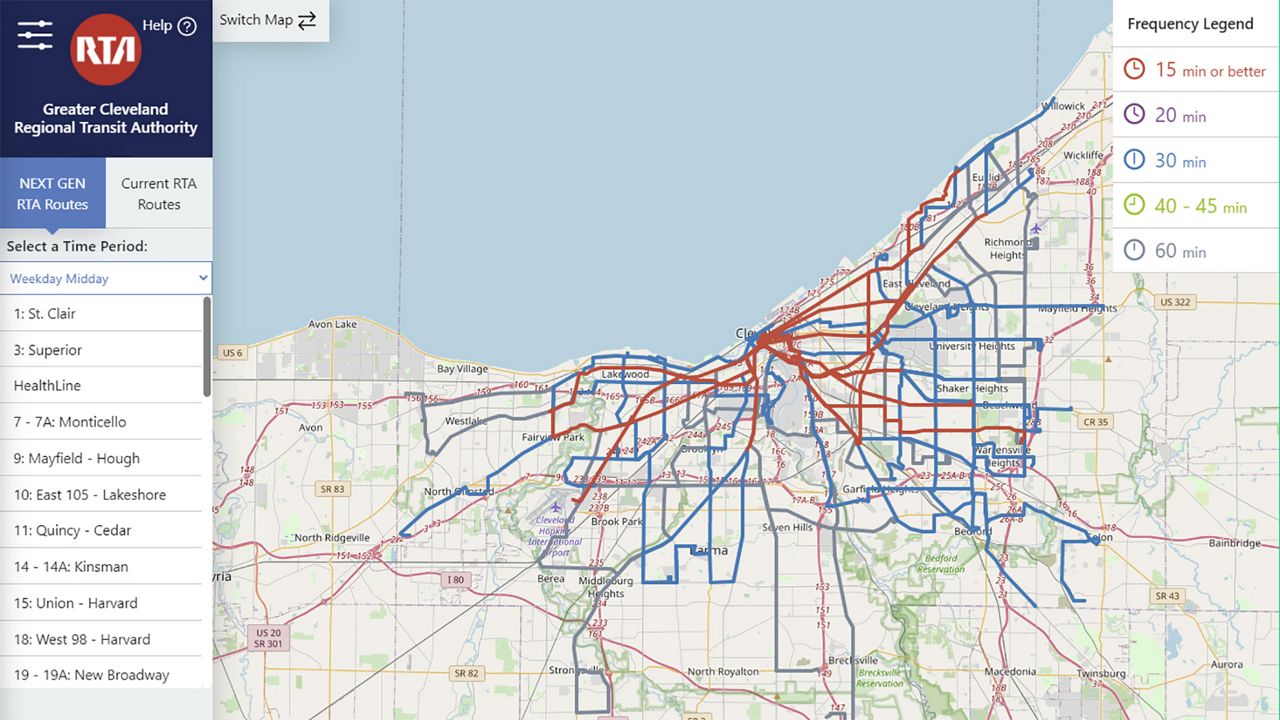CLEVELAND — The Greater Cleveland Regional Transit Authority (RTA) wants public transit users to weigh in on a proposed redesign of Cleveland’s transit system.
The RTA serves each of Cuyahoga County‘s 59 political subdivisions, and counts nearly 33 million annual riders, according to the RTA 2019 annual report. Its service area covers more than 480 square miles, and includes more than 5,700 bus stops.
To streamline the proposed redesign for users, the RTA created an interactive website that allows users to scrutinize the proposed color-coded bus routes by specific time of day, by frequency and by route.
Users can easily flip between a map of the proposed changes and the existing routes, and submit suggestions or comments 24/7.
All maps and presentations that have been generated during the information gathering phase are available online, with many of them downloadable.
Those who don’t have internet access can call the RTA at 216-621-9500 six days a week to have their questions answered by bilingual operators, said Director of Service Management Joel Freilich. Callers also can have materials mailed to them.
Community input on the comprehensive bus system was gathered in a series of public settings in 2019, and through Facebook live and other online forums after the pandemic started.
“So we're trying to be accessible to everyone no matter what their style of comment,” Freilich said.
The public comment period officially ends Nov. 30.
While Cleveland RTA wants the comments in as soon as possible, any that come in after the cutoff will still be heard, Freilich said.
“That doesn't mean the comment would be useless,” he said. “Because the comment might influence the future adjustments beyond what might happen later, in the second half of the year. So we never really close our ears.”
So far, the RTA learned through public input that work trips, educational trips and medical trips are top priorities, and that the frequency of busses is important, Freilich said.
“Don't abandon any communities, or neighborhoods. But you could strategically remove some routes if that will allow you to make other routes and main routes more frequent,” he said of input gathered. “So the public clearly expressed the high priority for frequency.”
The new design answered the call for greater frequency, which is expected to mean shorter wait times for riders, with some routes offering seven-day-a-week service.
The RTA has been forced to “reprioritize” over the years, Freilich said, and make changes based on the cuts in state and federal funding.
“But this was the first time that we decided to do a system redesign, even though we were working with level dollars,” he said. “Just to see whether perhaps rethinking our service, bringing in some outside experts to assist us, might be able to help us reallocate our resources more effectively.”
The RTA worked with Jarett Walker & Associates of Portland, Oregon, which conducted five separate studies of the system, with one being a 10-year strategic plan focused on the bus network, Freilich said.
RTA will present a proposed design to its Board of Directors in early December.
To allow enough time to communicate route changes to transit users, the RTA expects to launch the new system in June 2021.



